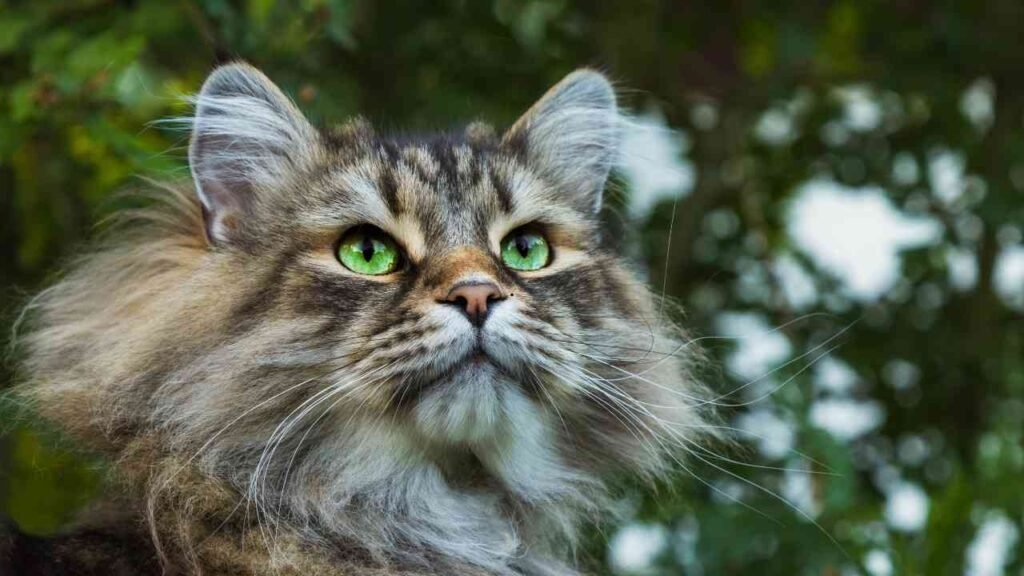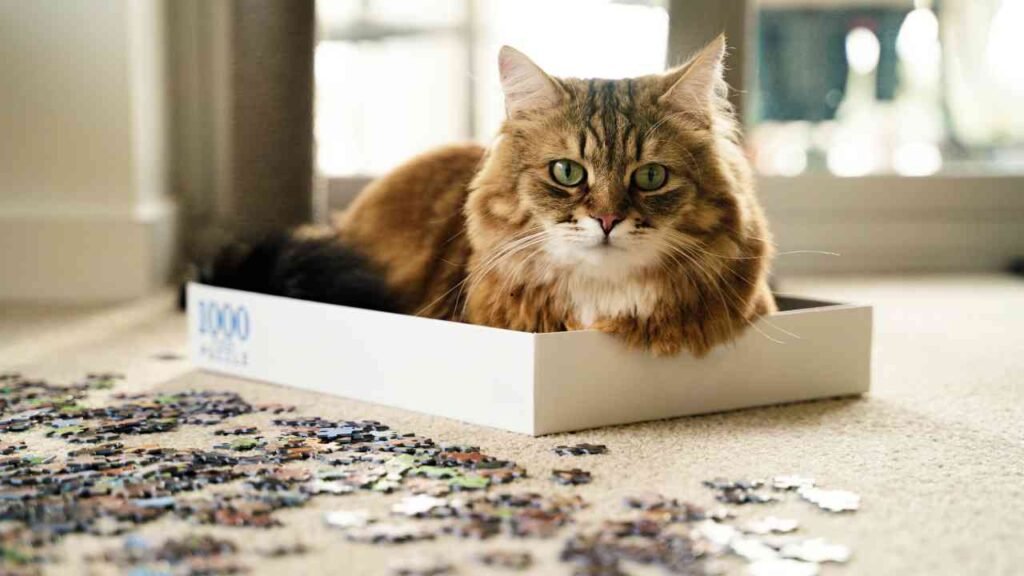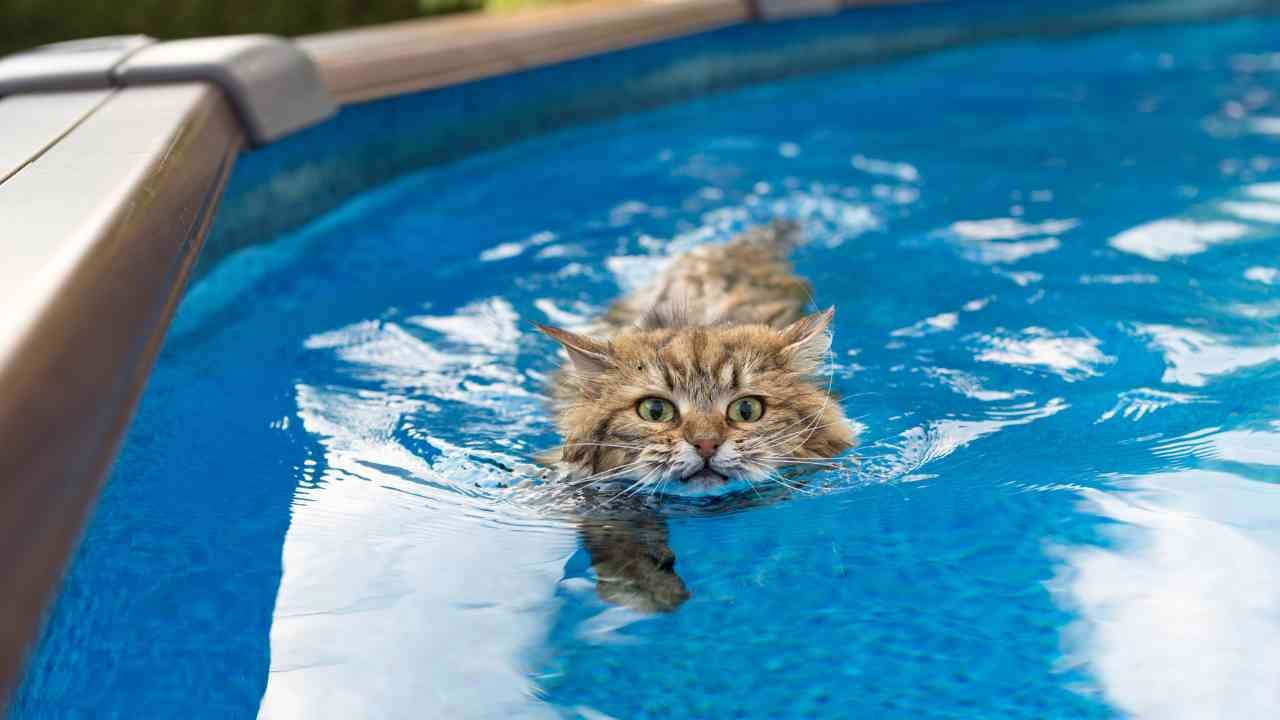Topics Covered in This Blog Post
- Introduction to the Siberian Cat
- Origins and Historical Significance
- Physical Appearance and Coat
- Personality and Temperament
- Intelligence and Activity
- Grooming Needs
- Health and Lifespan
- Diet and Nutrition
- Siberians with Children and Other Pets
- Cost and Adoption Guide
- Is the Siberian Cat Right for You?
- FAQs
- Final Thoughts
Introduction to the Siberian Cat
Hailing from the snowy forests of Russia, the Siberian cat is a majestic, semi-longhaired breed known for its triple-layered coat, playful nature, and unwavering loyalty. Often called a “gentle giant,” the Siberian combines strength with affection, making it an ideal choice for families and cat lovers seeking a hardy yet loving companion.
Origins and Historical Significance

The Siberian cat is one of the oldest natural cat breeds, dating back over 1,000 years. It originated in cold climates, where its dense coat evolved as protection against harsh winters.
In Russian folklore and literature, Siberians were celebrated as mystical guardians and were often found roaming monasteries and rural homes. They were officially recognized by cat registries like TICA and CFA only in the late 20th century when the breed gained popularity outside Russia.
Physical Appearance and Coat

Siberians are medium to large-sized cats with a powerful, muscular build and a rounded, balanced appearance.
Key Features:
- Body: Strong, well-boned, and agile
- Head: Broad with rounded contours and expressive eyes
- Eyes: Green, gold, or copper (blue in colorpoints)
- Tail: Long and bushy
- Coat: Dense triple-layered coat, water-resistant, with a ruff around the neck
Common Coat Colors:
- Brown tabby (most popular)
- Silver, red, cream, blue, tortoiseshell
- Colorpoint varieties (like Neva Masquerade)
Personality and Temperament
Siberians are famous for their balanced and friendly personality. They are not clingy but love being near their humans.
Traits:
- Affectionate and loyal
- Playful well into adulthood
- Gentle with children and elderly
- Alert and curious, without being hyper
They often greet their people at the door and will follow them from room to room, silently watching or engaging with soft trills.
Intelligence and Activity
Siberian cats are highly intelligent and love challenges. They can learn:
- Puzzle toys
- Opening cabinets
- Basic tricks (like fetch!)
- Walking on a leash
They are agile climbers and jumpers, thanks to their strong hind legs. Having cat trees or vertical play spaces is essential to keep them engaged and healthy.
Grooming Needs
Despite their thick coat, Siberians are surprisingly low-maintenance when it comes to grooming — their fur is less prone to matting due to a naturally oily, water-repellent texture.
Grooming Checklist:
- Brush 2–3 times a week
- More frequently during seasonal shedding
- Nail trimming every 2–3 weeks
- Occasional baths if needed
- Clean ears and brush teeth regularly
Health and Lifespan
Siberians are a generally healthy, natural breed. However, they can be prone to:
- Hypertrophic Cardiomyopathy (HCM) – common in many cat breeds
- Polycystic Kidney Disease (rare)
- Obesity – due to their large frame and love of food
Lifespan:
12 to 16 years with proper diet, exercise, and regular veterinary care
Diet and Nutrition
Siberians are muscular and active, so they need a high-protein, well-balanced diet.
Feeding Tips:
- Choose foods with real meat as the first ingredient
- Avoid grains, artificial preservatives, or fillers
- Feed 2–3 small meals daily to avoid overeating
- Monitor weight, especially if indoor-only
Access to clean, fresh water is a must, especially since some Siberians enjoy playing in water bowls!
Siberians with Children and Other Pets
Siberian cats are known to be gentle giants, making them an excellent choice for homes with:
- Children – they tolerate petting and play well
- Dogs – especially those raised with cats
- Other cats – they usually adjust peacefully
They adapt quickly and aren’t easily startled, making them a stress-free addition to most households.
Cost and Adoption Guide
Cost Range:
- Breeders: $1,000 to $2,000 USD
- Adoption/Rescue: $100 to $300 USD
Look for:
- Ethical breeders registered with TICA/CFA
- Health guarantee & genetic testing
- Socialized kittens at least 12–14 weeks old
Avoid breeders who offer “cheap Siberian kittens” without health documentation — that’s often a red flag.
Is the Siberian Cat Right for You?
You’re likely a perfect fit for a Siberian if:
✅ You want a loyal and intelligent feline companion
✅ You enjoy occasional play and cat interaction
✅ You can commit to grooming during heavy shedding
✅ You live in a moderate-to-cold climate (ideal for Siberians)
They’re suitable for first-time owners and experienced cat people alike.
Frequently Asked Questions (FAQs)
Q1: Are Siberian cats hypoallergenic?
They produce lower levels of the Fel d 1 protein, which causes allergies — so many allergy sufferers tolerate Siberians better, but no cat is 100% hypoallergenic.
Q2: Can Siberians live in hot climates?
Yes, but ensure they stay indoors with proper ventilation and grooming.
Q3: Are Siberians vocal?
They are not loud like Siamese but do communicate with chirps, trills, and soft meows.
Q4: Do Siberian cats need companionship?
They bond closely with humans and may get lonely if left alone for long periods. Consider a second pet if you’re away often.
Final Thoughts
The Siberian cat is a majestic, intelligent, and adaptable companion. With its powerful body, luscious coat, and kind eyes, it offers both visual beauty and emotional connection. For anyone seeking a strong yet tender-hearted feline friend — the Siberian cat might just be your perfect match.
If you’re drawn to strong yet affectionate breeds, check out the wild-looking Bengal Cat or the ultra-relaxed Persian Cat— both offer unique personalities.
